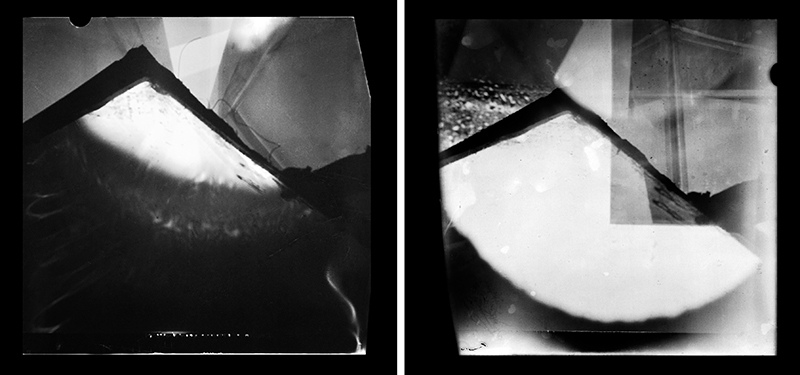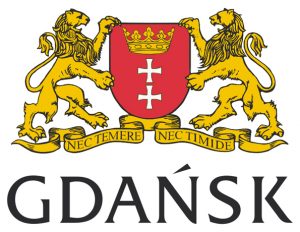8th June 2013 – 16th June 2013
Glass booth of the Villa Kaysersguet
Parc Henri-Louis Kayser
Strasbourg
Artist: Dorota Walentynowicz
In collaboration with Kartier Nord
Dorota Walentynowicz was born in Gdansk (Poland) in 1977. Her work, often conceptual, reveals and combines her profound technical knowledge acquired in various fields: photography, video, sound or video games. Since 2009, she creates many pinhole photographies. Sometimes looking like sculptures, these custom-built objects are, above all, a way to manipulate time and space, in order to result in architectural views, as abstract as unexpected. Thus, Dorota Walentynowicz questions the definiton and the role of photography by focusing more on technique than on the photographed subject.
After a first artistic experience in Strasbourg with the Exchange Residency program, Dorota Walentynowicz comes back for a solo exhibition of her sculptures and pinholes, created between 2011 and 2012. Algebra of fiction reveals these photographic objects and black and white photographic prints which are the result of “equations with many unknowns”. From the form of depiction we can trace back to the imagine form of the camera. What is between it, is poetry…
Partners of the exhibition
“What appears in Walentynowicz’s series “Folds” are reversion, cracks, folds and displacements? Fragments of space and illusion overlap each other, so finally the borderlines between form and content, reality and poetry, art and technology are blurred. Similar to the works by Laszlo Moholy Nagy, light plays the key role in the shaping of the space of imagery in Walentynowicz’s “Folds” series. Moholy Nagy wrote: “light is a pigment” (“Vision in Motion”, 1946), referring to the status of light as an element creating new forms in the structure of a photographic image. In the works of Dorota Walentynowicz light also introduces narration into spatial forms, while its motion pre-conditions kinetic processes. (Cezary Pieczynski)
The “fold” as such has a strong grounding in philosophy of Gilles Deleuze, particularly elaborated in his writings dedicated to philosophy of Gottfried Wilhelm Leibniz (“Fold”, 1988) and to Michel Foucault (“Foucault”, 1986). “Fold” is for Deleuze a metaphysical concept; it is the key to ontology of becoming, of multiplicity, of a differentiation, while maintaining continuity. The fold also names the relationship of oneself to ones ‘self’. For Deleuze there is no one substance, one being – there is only an always-differentiating process, an origami cosmos, always folding, unfolding, refolding. (G. Deleuze “A Thousand Plateaus”).
The fold is also a spatial concept – it is the inside of the outside. It is also the smallest element of a labyrinth.
The fold is the general topology of thought (…) the ‘inside’ space is topologically in contact with the “outside” space, and brings the two into confrontation at the limit of the living present. (G. Deleuze “Foucault”)
The idea of interchanging inside and outside is central to my photographic work: the space represented on the negative (the inside) is a direct mould of the shape of the outside worlds mediated through the shape and position of the camera. Through variation in camera’s shape the represented space also changes its form – it becomes the casting of the camera’s shape.”
Dorota Walentynowicz, 2013
Residence of Dorota Walentynowicz
The crossed-residences program established by the City of Strasbourg, give every year the opportunity for several artists to enrich their personal and professional development through an experience in a foreign country. In this context, in 2012, the City of Strasbourg will welcome the Polish artist, Dorota Walentynowicz and Patrick Bogner, photograph of Strasbourg, will develop an artistic project over several trips to Gdansk. The residences are supervised by the Apollonia association and “Laznia” Center for Contemporary Art in Gdansk.
Supported by City of Gdansk Culture Scholarship
HETEROTOPIAS – PROJECT DESCRIPTION
Dorota Walentynowicz
In my artistic work I have consistently been taking on topics, which in a direct or indirect way relate to the question of the role that the photographic image plays in the process of industrialization of contemporary culture. The creative industry is one of those domains in which this process is rather easy to observe – to begin with the change in nomenclature from the word “art” to “creative industry” that we are now witnessing. As a reflection on this process I recently started producing series of photographs that have been made in various exhibition spaces, both those in which I presented my own work as well as those visited as a spectator.
The topic of a museum is interesting to me not only as an example for observing a certain social process, but also because of its importance for the coining of term “heterotopia” as presented in the essay by Michel Foucault “Of Other Spaces” which has recently drawn my interest as potential source of artistic and philosophical investigation. It is to these issues that I would like to devote my research during the stay in Strasbourg.
In Strasbourg I intend to realize a photographic project based on documentation of the interiors of local galleries and museums. In this work I will use self made cameras, whose idiosyncratic image-making features I intend to exploit in producing a site specific photographic installation. I have been working with self made pinhole cameras since 2009, often using them to document my own kinetic installations, at the same time expanding the idea of a photographic documentation by stressing the importance of the photographic medium over the photographed object itself. The cameras, which I have been using, are designed as sculptures – made out of thin wood and painted black they form figures that in their shape refer to platonic elements, architectural models or modernist objects. Their form is their camouflage. Placed inside a gallery, filled with light sensitive material, they record their surrounding with their photographic eye and over long time of exposure preserve it directly on the negative which later will be used to produce photographic prints. Therefore the process of photographing itself gains a performative aspect, it becomes an action with a distinct temporal dimension which is being enacted in the space of art. Using the photographic process as a performance on one hand side together with the act of documentation of artworks as art itself situates my work in the scope of reference of the Luise Lawler’s conceptual oeuvre. However the idea of shaping the camera to resemble an artwork and displaying it during the process, makes my practice quite specific.
Using the pinhole sculptures I analyse photography as fragmented reality, that can be reassembled by implementing certain taxonomic procedures. Because of the imperfection of this technique – lack of viewfinder, which disables precise framing – pictures of the registered space manifest their fragmentality with much more strength then any usual, orderly composed image. The cut out is more obvious, space appears broken or split, the frame seems to gravitate towards the whole, the feeling of understatement is more piercing. These very features of photography I intend to explore in my project and use them to produce large scale pictures of fragmented museum spaces that will be produced in a 1 to 1 dimension and installed on the walls of my studio as if to resemble contemporary frescoes. The photographic prints will be combined with another technique, that of antrakotypia, which allows the reproduction of photographic images directly on a plasterboard by using carbon mixed with gelatin. Images formed using this technique appear as naturally imperfect, reminding of those practices in wall decoration that simulate aging of the surface, giving it the appearance of passing time.
Using a combination of both of these techniques I intend to produce a reflection on the topic of exhibition space as a perfect example of heterotopia, as a slit in the casual space-time order, as a placeless and timeless place, which resembles a mirror in which everything can be reflected without affecting its own physically, which in itself is a locus without a genius but in which other loci are sampled and assembled. In his essay “Of other spaces” Michel Foucault describes it in such way: .. Museums have become heterotopias in which time never stops building up and topping its own summit… (with) the idea of accumulating everything, of establishing a sort of general archive, the will to enclose in one place all times, all epochs, all forms, all tastes, the idea of constituting a place of all times that is itself outside of time and inaccessible to its ravages, the project of organizing in this way a sort of perpetual and indefinite accumulation of time in an immobile place (…). This idea, as says Foucault, is one very much of the modernity.

